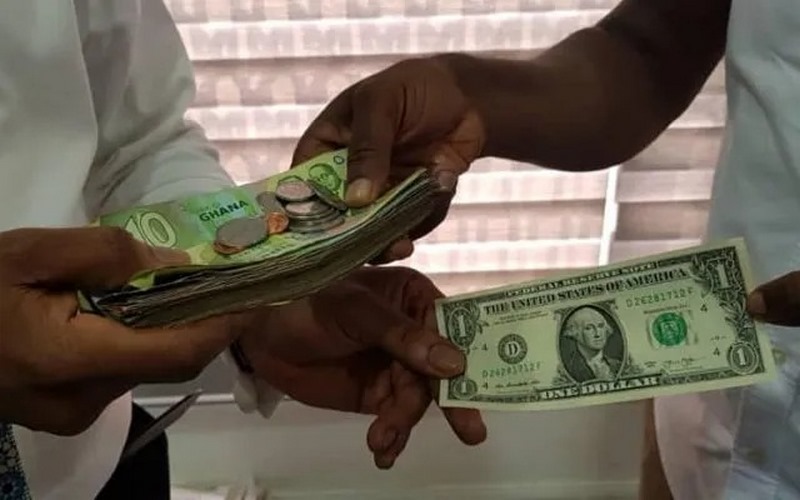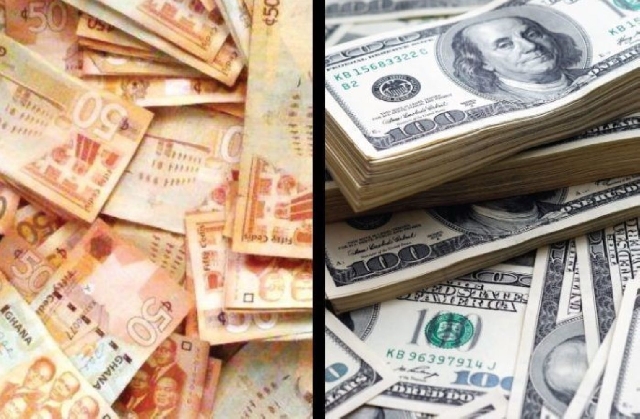The Bank of Ghana has revealed a troubling trend in the country’s currency market, with the Ghana cedi depreciating by approximately 19.6% against the US dollar on the interbank forex market as of July 2024. This decline is slightly less severe than the 21% loss in value observed on the retail market, highlighting the ongoing challenges facing Ghana’s economy.

According to the Central Bank’s July 2024 Summary of Financial and Economic Data, the cedi’s depreciation against the dollar has been progressive throughout the year. March 2024 saw a 7.7% loss, followed by a 10.5% depreciation in April. The situation worsened in subsequent months, with June and July witnessing 15.9% and 18.6% depreciations respectively.
On the retail market, the cedi is trading at an average of GH¢15.60 against the dollar, while the Bank of Ghana quotes one dollar at GH¢14.78. The currency’s performance against other major currencies is equally concerning, with a 20.8% depreciation against the British pound (trading at GH¢19.10) and an 18.4% loss against the euro (selling at GH¢16.09).
Despite these challenging figures, there was a glimmer of hope last week as the Ghana cedi extended its rally against the US dollar amid rising corporate demand. The market’s anticipation of a potential rate cut by the US Federal Reserve contributed to a weakening American greenback, allowing the local currency to gain 0.29% week-on-week against the dollar, ending at a mid-rate of GH¢15.64/$ on the retail market. This marked the second consecutive week of gains for the cedi against the world’s most important currency.
However, the broader economic implications of this currency depreciation are significant. Finance Minister Dr Mohammed Amin Adam has disclosed that the cedi’s depreciation has led to a substantial increase in Ghana’s national debt. From an initial amount of GH¢608 billion in 2023, the debt has surged to GH¢742.0 billion in the first half of 2024, representing a 22% increase attributed to both the cedi’s depreciation and disbursements from creditors.

Dr Adam provided a breakdown of this debt during the mid-year budget review in parliament, as required by Section 28 of the Public Financial Management Act, 2016 (Act 921). The total debt stock comprises external debt of GH¢452 billion (60.9% of the total) and domestic debt of GH¢290 billion (39%). In terms of GDP, external and domestic debt account for 43.0% and 27.6% respectively.
The Finance Minister also outlined the government’s financing strategy, stating that domestic financing of the debt would amount to GH¢38.9 billion, representing 3.8% of the revised GDP and 71.9% of the total financing for 2024. He noted that a downward revision of GH¢7.9 billion in interest payments reflects the impact of external debt restructuring on external interest payments.
Looking forward, Dr Adam emphasized that the government would continue to build on the 2024 Medium Term Debt Strategy (MTDS) implemented in the first half of the year. This strategy focuses on achieving an appropriate financing mix aimed at supporting fiscal consolidation without compromising macroeconomic stability and debt sustainability.
As Ghana grapples with these economic challenges, the government’s ability to navigate the complex interplay between currency depreciation, debt management, and overall economic stability will be crucial. The coming months will be critical in determining whether the strategies outlined by the Finance Minister can effectively address these pressing financial issues and set Ghana on a path towards sustainable economic growth.



